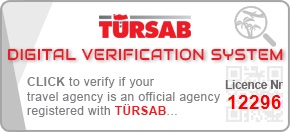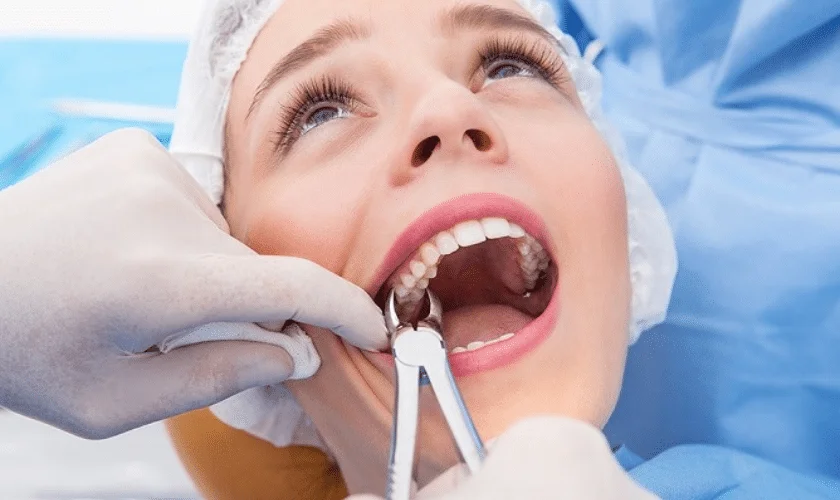The extraction of wisdom teeth, clinically known as third molars, is a common oral surgical procedure undertaken by millions globally. While the procedure itself is typically brief and performed under local or general anaesthesia, the subsequent wisdom teeth removal recovery period is critical for preventing complications and ensuring optimal healing. This phase requires diligent adherence to post-operative instructions to mitigate pain, reduce swelling, and prevent infection. Understanding the intricate details of what to expect and how to properly care for the extraction sites is paramount for a smooth and efficient return to normal function.
Table of Contents
Understanding Wisdom Teeth Extraction
Wisdom teeth are the last set of molars to erupt, typically between the ages of 17 and 25. Often, there isn’t enough space in the jaw for these teeth to emerge properly, leading to impaction. Impaction can cause a myriad of issues, including severe pain, infection, damage to adjacent teeth, and cyst formation. When such complications arise, extraction becomes a necessary intervention to preserve oral health.
Types of Extraction
The complexity of wisdom teeth removal varies significantly based on the tooth’s position, degree of impaction, and root structure. There are primarily two types of extractions:
- Simple Extraction: This involves removing a fully erupted tooth that is visible in the mouth and can be extracted with standard dental instruments. It typically requires less surgical intervention and a shorter recovery period.
- Surgical Extraction: This procedure is necessary for impacted wisdom teeth, meaning they are still beneath the gum line or bone. It often involves an incision in the gum, removal of bone tissue, and sometimes sectioning the tooth into smaller pieces for easier removal. Surgical extractions inherently carry a greater risk of post-operative discomfort and a longer wisdom teeth removal recovery timeline.
Your oral surgeon will conduct a thorough examination, including X-rays, to determine the most appropriate extraction method and prepare you for the procedure. This diagnostic phase is crucial for anticipating potential challenges during and after the surgery.
The Wisdom Teeth Removal Recovery Timeline
Navigating the wisdom teeth removal recovery process requires patience and adherence to a structured timeline. While individual experiences may vary, a general progression of healing can be anticipated. The intensity of symptoms typically peaks within the first 72 hours and gradually subsides.
Day 1: Immediate Post-Operative Care
- Upon leaving the dental clinic, your focus will be on managing initial symptoms and protecting the blood clot forming in the extraction site. This clot is fundamental for proper healing.
- Bite on gauze pads: Maintain gentle, firm pressure on the gauze pads placed over the extraction sites for 30-60 minutes to control bleeding. Replace them as needed, but avoid excessive spitting or rinsing, which can dislodge the clot.
- Manage pain: Begin taking prescribed pain medication or over-the-counter analgesics as directed, ideally before the local anaesthesia completely wears off.
- Apply ice packs: Intermittently apply ice packs to the outside of your cheeks (20 minutes on, 20 minutes off) for the first 24 hours to minimize swelling and discomfort.
- Rest extensively: Avoid strenuous activities and elevate your head with pillows while resting or sleeping.
- Soft diet: Consume only soft, cool foods and liquids. Avoid hot foods, alcohol, and using straws, which can create suction and dislodge the blood clot.
Days 2-3: Peak Swelling and Pain Management
This period often represents the peak of swelling and discomfort. Persistent management strategies are vital.
- Continue pain medication: Follow your prescribed pain management regimen rigorously.
- Manage swelling: While ice packs are most effective in the first 24 hours, some individuals find continued cold application beneficial. After 24-48 hours, warm compresses may be introduced to promote circulation and reduce stiffness.
- Oral hygiene: Begin gentle rinsing with warm salt water (1/2 teaspoon salt in 8 ounces warm water) 2-3 times a day, particularly after meals, to keep the area clean. Avoid direct brushing of the extraction sites.
- Soft diet: Maintain a diet of soft, nutritious foods. Hydration is crucial.
Days 4-7: Gradual Improvement
By this stage, swelling should begin to subside, and pain levels should significantly decrease. You will start to feel more like yourself.
- Reduce pain medication: Gradually decrease or discontinue pain medication as discomfort lessens.
- Continue oral hygiene: Maintain gentle salt water rinses. You can carefully begin brushing teeth, avoiding the extraction sites.
- Expand diet: Slowly reintroduce semi-soft foods, avoiding anything crunchy, sticky, or hard that could irritate the healing sites or get lodged in the sockets.
- Avoid strenuous activity: Continue to limit intense physical exertion to prevent complications.
Weeks 2-4: Continued Healing and Socket Closure
The initial healing of the soft tissues typically occurs within 1-2 weeks. However, the bone beneath the gum will take several weeks to months to fully regenerate and fill the socket. During this phase, it’s still important to exercise caution.
- Return to normal activities: Most individuals can resume normal activities and exercise, provided there is no discomfort at the extraction sites.
- Full diet resumption: Gradually return to a normal diet, but remain cautious with very hard or sharp foods. Be aware that food particles can still get trapped in the healing sockets, which can be irritating.
- Follow-up appointment: Attend any scheduled follow-up appointments with your oral surgeon to ensure proper healing and address any lingering concerns.
Managing Common Recovery Challenges
Effective management of potential issues is crucial for a smooth wisdom teeth removal recovery.
Pain Management
Post-operative pain is an expected component of wisdom teeth extraction. Your surgeon will typically prescribe a pain management regimen. A systematic review and meta-analysis on managing post-operative pain and swelling after third molar surgery highlights the efficacy of a multi-modal approach. This research concluded that a combination of non-steroidal anti-inflammatory drugs (NSAIDs) with paracetamol is generally superior to opioids for pain control, offering fewer side effects. Additionally, corticosteroid administration, particularly pre-operatively, was consistently effective in significantly reducing post-operative swelling, without increasing infection rates when appropriate antibiotic prophylaxis was administered. This underscores the importance of a comprehensive strategy for optimizing patient comfort. Always adhere strictly to the dosage and frequency prescribed.
Swelling and Bruising
Swelling and bruising are common and usually peak within 48-72 hours. Applying ice packs as directed is the primary method to mitigate these symptoms. After the initial 24-48 hours, warm, moist compresses can help resolve residual swelling and jaw stiffness.
Oral Hygiene
Maintaining oral hygiene without disturbing the blood clot is a delicate balance. Gentle salt water rinses are invaluable for keeping the area clean and reducing bacterial load. Avoid vigorous rinsing or spitting, which can dislodge the clot and lead to a painful condition known as dry socket.
Dietary Considerations
A soft food diet is essential during the initial recovery. Examples include mashed potatoes, yogurt, smoothies, soups (cooled), and scrambled eggs. Gradually transition to semi-soft foods as comfort allows. Avoid anything that requires significant chewing, is extremely hot or cold, or has small seeds that could get stuck in the socket.
Avoiding Dry Socket
Dry socket, or alveolar osteitis, is a painful condition where the blood clot dislodges prematurely, exposing the underlying bone. It is the most common complication of wisdom teeth extraction. To prevent it:
- Avoid smoking or vaping entirely.
- Do not use straws.
- Refrain from vigorous spitting or rinsing in the first 24-48 hours.
- Avoid alcohol. 5. Follow all post-operative instructions diligently.
- If you experience severe, throbbing pain radiating to your ear, temple, or neck, typically 3-5 days after surgery, contact your surgeon immediately.
Potential Complications and When to Seek Help
While most wisdom teeth removal recovery processes are straightforward, certain signs warrant immediate medical attention:
- Excessive bleeding: If bleeding is heavy and doesn’t subside after 30-60 minutes of firm gauze pressure.
- Severe, unmanageable pain: Pain that worsens or doesn’t respond to prescribed medication.
- Persistent swelling: Swelling that increases after 3-4 days or spreads to other areas.
- Fever: A temperature of 38°C (100.4°F) or higher, which can indicate infection.
- Pus or foul odour: Signs of infection around the extraction site.
- Numbness: Persistent numbness in the lip, chin, or tongue beyond a few hours post-surgery.
- Difficulty swallowing or breathing: Rare but serious complications.
It is imperative to maintain open communication with your dental professional during your recovery journey. Your surgeon is the best resource for addressing any concerns or unexpected symptoms.
Preparing for Your Wisdom Teeth Removal
Preparation is key to a smooth wisdom teeth removal recovery. Discuss the procedure thoroughly with your oral surgeon beforehand. Ensure you understand the pre-operative instructions, including any dietary restrictions or medication adjustments.
Consider arranging for someone to drive you home after the surgery, especially if you are receiving sedation. Stock your refrigerator with soft foods, prepare ice packs, and ensure you have comfortable clothing for your recovery period. Being well-prepared reduces stress and allows you to focus solely on healing.
Wisdom Teeth Removal in Turkey vs. the UK
Many patients, particularly from the UK, are increasingly exploring international options for dental treatments, including wisdom teeth removal. Turkey has emerged as a prominent destination for medical tourism, offering advanced facilities, experienced specialists, and competitive pricing. When considering Tooth Extraction in Turkey, patients often find a compelling balance of quality and affordability.
| Service/Item | Turkey Price (USD) | UK Price (GBP) |
|---|---|---|
| Single Simple Wisdom Tooth Removal | $250 – $400 | £150 – £300 |
| Single Impacted Wisdom Tooth Removal | $450 – $700 | £350 – £600 |
| All Four Wisdom Teeth Removal (Complex) | $1,200 – $2,500 | £1,500 – £3,000 |
*Note: Prices are approximate and can vary based on clinic, complexity, and individual patient needs. UK prices refer to private treatment, as NHS access can be limited.*
The appeal of seeking treatment in Turkey extends beyond cost savings. Many clinics provide comprehensive packages that include accommodation, transfers, and post-operative care, streamlining the experience for international patients. Furthermore, the high standards of dental care in destinations like Antalya’s Medical Trend: Premier Global Health Destination make Turkey an attractive option for those seeking quality dental care.
Factors Influencing Recovery: A Comparison
The nature of the extraction significantly impacts the recovery period. Understanding these differences can set realistic expectations for your personal wisdom teeth removal recovery.
| Factor | Simple Extraction | Surgical Extraction (Impacted) |
|---|---|---|
| Procedure Complexity | Low | High |
| Recovery Time | Shorter (3-7 days) | Longer (7-14 days or more) |
| Pain Level | Mild to Moderate | Moderate to Severe |
| Swelling Potential | Low to Moderate | Moderate to High |
| Diet Restrictions | Shorter duration | Longer duration |
Optimizing Your Recovery with CK Health Turkey
At CK Health Turkey, we are committed to providing unparalleled dental and medical care for international patients. Our team of highly skilled oral surgeons and dedicated support staff ensures a comfortable and efficient wisdom teeth removal recovery experience. We understand the specific needs of patients traveling from the UK and offer comprehensive packages designed to facilitate every aspect of your treatment journey.
Choosing CK Health Turkey means entrusting your oral health to experts who genuinely care about your well-being. We strive to make your experience as seamless and stress-free as possible, allowing you to focus on a swift return to optimal health. To learn more about our wisdom teeth removal services or to schedule a consultation, we invite you to explore our website or contact our patient coordination team today. Your journey to enhanced oral health begins with us.
Achieving a successful wisdom teeth removal recovery is a direct result of meticulous planning, skilled surgical intervention, and diligent post-operative care. By understanding the typical timeline, proactively managing pain and swelling, adhering to dietary recommendations, and maintaining stringent oral hygiene, patients can significantly reduce the risk of complications. Empowering oneself with knowledge and selecting a reputable healthcare provider are the cornerstones of navigating this common dental procedure with confidence and ensuring a swift return to comfort and full oral function. Prioritizing your recovery by following professional guidance will lead to the best possible outcome.
FAQs
How long does wisdom teeth removal recovery typically take?
The initial recovery, where most discomfort and swelling subside, usually takes 3-7 days. However, complete healing of the bone can take several weeks to months.
What are the best ways to manage pain after wisdom teeth extraction?
Your surgeon will likely prescribe pain medication. Over-the-counter NSAIDs like ibuprofen, often combined with paracetamol, are also effective. Applying ice packs to the cheeks immediately after surgery can also help.
Can I eat normally immediately after wisdom teeth removal?
No, you must start with a soft diet for the first few days. Gradually introduce semi-soft foods as comfort allows. Avoid crunchy, sticky, or very hot foods, and do not use a straw, as these can dislodge the blood clot.
What is dry socket, and how can I prevent it?
Dry socket (alveolar osteitis) occurs when the blood clot in the extraction site dislodges prematurely, exposing the bone and nerves. Prevent it by avoiding smoking, using straws, vigorous spitting or rinsing, and strictly following all post-operative instructions.
When can I resume exercise after wisdom teeth removal?
Strenuous activities should be avoided for at least 3-7 days to prevent dislodging the blood clot and increasing swelling or bleeding. Gradually reintroduce light activities as you feel comfortable, monitoring your body’s response.
Is it normal to have swelling and bruising after the procedure?
Yes, swelling and bruising are common after wisdom teeth removal, especially for impacted teeth. Swelling typically peaks around 48-72 hours post-surgery and gradually subsides. Applying ice packs as directed can help minimize these symptoms.
What should I do if I experience excessive bleeding?
Gently bite down on a clean gauze pad placed over the extraction site for 30-60 minutes. If bleeding is heavy and persistent after this, contact your oral surgeon immediately.
When should I contact my oral surgeon during recovery?
You should contact your surgeon if you experience severe pain not relieved by medication, persistent or increasing swelling after 3-4 days, fever, pus or a foul odour, persistent numbness, or difficulty swallowing or breathing.



